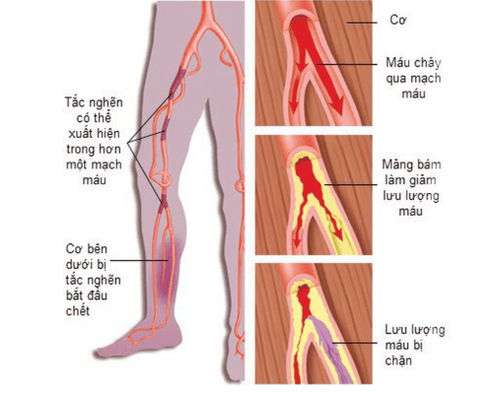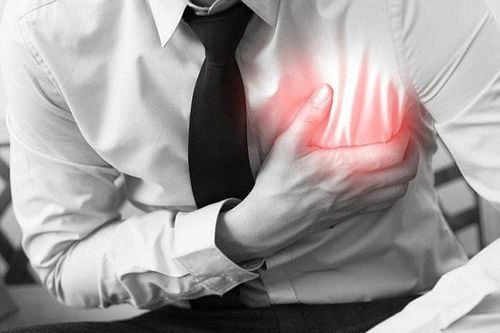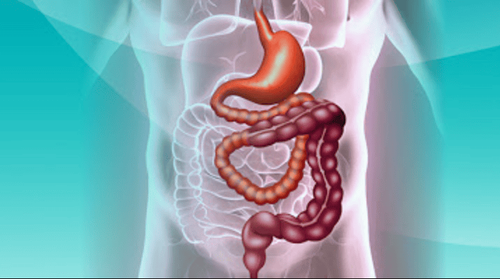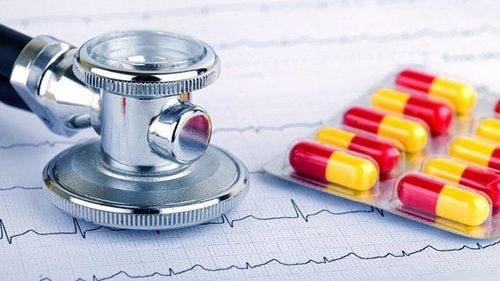This is an automatically translated article.
Surgical ligation of the great peripheral blood vessels is one of the methods applied to treat some diseases of the peripheral blood vessels or blood vessels in the extremities, be it damage to the large blood vessels or trauma. peripheral vascular injury.
1. What is Peripheral Vascular?
Peripheral vascularization is defined as the vascular system of the upper and lower extremities in the human body. Peripheral blood vessels in the extremities are usually large vessels including:
Peripheral blood vessels of the upper extremities: Limited from the subclavian artery to the radial and ulnar arteries, the subclavian veins to the veins armpit circuit. Peripheral blood vessels of the lower extremities: are limited from the external iliac artery to the leg arteries are the anterior tibial artery and posterior tibial artery, popliteal vein to the external iliac vein. Peripheral vascular disease is very diverse and includes many different diseases such as arterial disease, venous disease, lymphatic disease, distal circulatory disease... Clinically, vascular disease Peripheral vascular disease is divided into 2 main groups, including vascular disease, which is a disease caused by the blood vessel itself, and acute vascular injury, which is an emergency disease, including vascular wound, occlusion. Acute limb artery and peripheral vascular injury. In particular, peripheral vascular injury is a frequent occurrence leading to acute peripheral vascular injuries due to some common causes such as traffic accidents, occupational accidents, and should be treated. timely treatment to prevent dangerous complications caused by this disease.
2. Peripheral vascular trauma
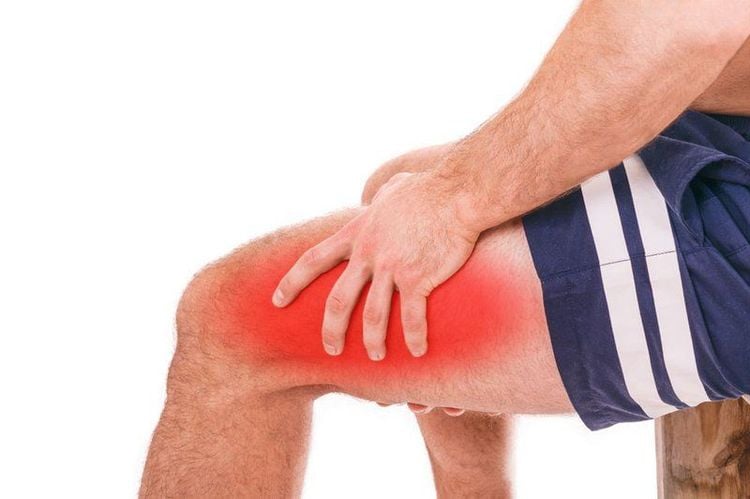
Gãy xương có thể là nguyên nhân gây ra chấn thương mạch máu ngoại vi
Peripheral vascular trauma in which peripheral artery trauma is defined as vascular lesions in 3 layers of the vessel wall, causing intravascular bleeding causing bleeding outside the skin, or just bleeding under the skin, causing blood vessel circulation to be blocked. The most typical clinical presentation of peripheral vascular injury is bleeding, self-clotting, or ecchymosis. Some patients with small diameter muscular artery bifurcation or arterial injury at the head of the extremities appear symptoms of blood vessels constricting or pulling, hemostasis, also known as signs and symptoms. dry wound sign.
If the cause of vascular injuries is often due to sharp objects such as knives, bullets or shots to the body, the causes of peripheral vascular injuries are often more diverse and complex, divided into 2 types of causes. Indirect and direct causes are as follows:
Indirect causes: A common cause of peripheral vascular trauma fractures caused by accidents that cause the ends of the bones to hit an artery or the ends of the bones to crush them an artery adjacent to the fractured bone, usually the posterior popliteal artery of the tibial plateau. Direct causes: Less common than indirect causes, because objects falling into the arteries cause damage to the soft parts of the body, including the arteries, sometimes causing bone fractures.
3. Surgical ligation of the great peripheral blood vessels
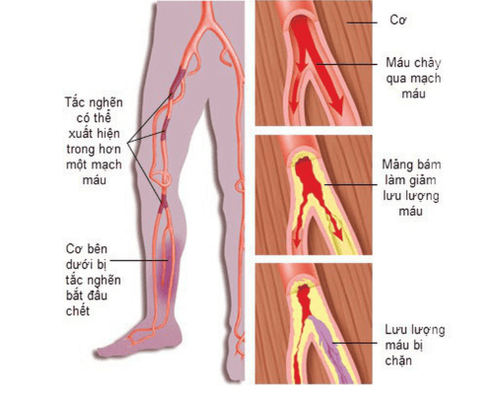
Tắc động mạch chi thì có thể thực hiện biện pháp như tiến hành cấp cứu vết thương đứt mạch máu.
In order to manage acute peripheral vascular injuries such as arterial wounds, arterial trauma or occlusion of extremity arteries, measures such as performing first aid care for broken blood vessels can be carried out. Most importantly, surgical ligation of the peripheral blood vessels should be performed to stop the bleeding as soon as possible.
Before performing ligation of major vessels, it is necessary to prepare the following steps:
Explain to the family and patient about the technique to be performed for that patient, paying attention to the presentation and explanation of the risks. muscle, possible complications after surgery such as amputation, death... Perform laboratory tests on patients before surgery to check for health problems, including laboratory tests blood count, blood group test, blood clotting function, test to check the function of organs such as liver, kidney, test for electrolytes, test for 10 urine parameters, chest X-ray straight ... Prepare the necessary tools for surgery. The technique of ligation of the great peripheral blood vessels is performed according to the following steps:
To numb the patient with local anesthesia, spinal anesthesia or possibly endotracheal anesthesia, attention Monitor the patient's blood pressure and electrocardiogram during the procedure. Catheterize the patient before surgery. Position the patient in a position suitable for the position of the peripheral blood vessel to be ligated. More specifically, if the axillary artery is ligated, the arm can be placed horizontally at a 90° angle, accompanied by a pillow under the shoulder, or the patient can be placed on his side at an angle of 90° and the arm hangs at a 90° angle. If brachial artery ligation is performed, place the patient in supine position with arms at 90° horizontal position, palm supine. The femoral artery ligation should have the patient lie in the supine position. Disinfect the surgical site, then spread it. Make an incision along the vascular line, if it is the axillary or brachial artery, the 12 horizontal line between the clavicle or the lateral border of the pectoralis major, if it is the common and superficial femoral artery, the incision will be the Connects the point between the inguinal ligament and the 1⁄2 medial point between the medial condyle of the femur. Expose the portion of the artery required for ligation. Perform ligation of the exposed vessel with 2 ligation with slow or non-absorbable criteria. In some cases, it is necessary to place a drainage for the patient after ligation of the great vessels. Close the incision according to the correct anatomical layers. After surgery to ligation of large peripheral blood vessels, it is necessary to monitor and treat some problems as follows:
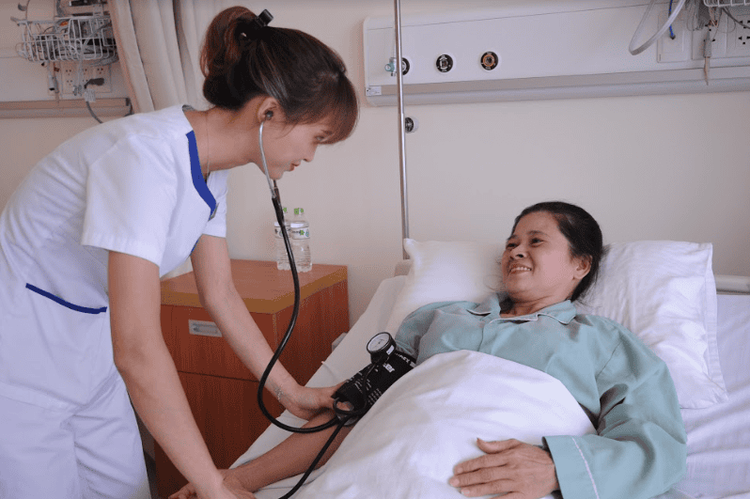
Bệnh nhân sau khi phẫu thuật cần được theo dõi mạch,nhịp thở ,huyết áp và nhiệt độ.
Monitor vitals such as breathing rate, pulse, temperature and blood pressure. If bleeding occurs, coagulation-related problems should be corrected, and surgery may be repeated if large clots or hemodynamic disturbances are present. In the case of patients experiencing acute post-operative ischemia, revascularization or amputation is required. When a patient has problems with blood clotting such as increased blood clotting or decreased blood clotting, it is necessary to adjust the anticoagulant Heparin to suit the condition of the patient. If there is an infection, possibly a systemic infection, then antibiotic therapy, preferably antibiotic prophylaxis, is given to the patient with blood transfusion or suture removal, reoperation, and silver-coated vessels. . Surgical ligation of the great peripheral blood vessels is one of the necessary indications to promptly prevent the consequences of acute peripheral vascular injury, including arterial wounds, vascular trauma. peripheral and limb artery occlusion. This is a complicated surgery, so when patients have suspicious symptoms, they should immediately go to a reputable medical facility to have a team of experienced and specialized doctors diagnose and perform ligation of large peripheral blood vessels. The most effective way.
Vinmec International General Hospital with a system of modern facilities, medical equipment and a team of experts and doctors with many years of experience in neurological examination and treatment, patients can completely peace of mind for examination and treatment at the Hospital.
To register for examination and treatment at Vinmec International General Hospital, you can contact Vinmec Health System nationwide, or register online HERE.
MORE
How is Peripheral Vascular Disease Diagnosed and Treated? Peripheral vascular disease includes which diseases? Causes and warning symptoms Guidelines for prevention and care of people with varicose veins




